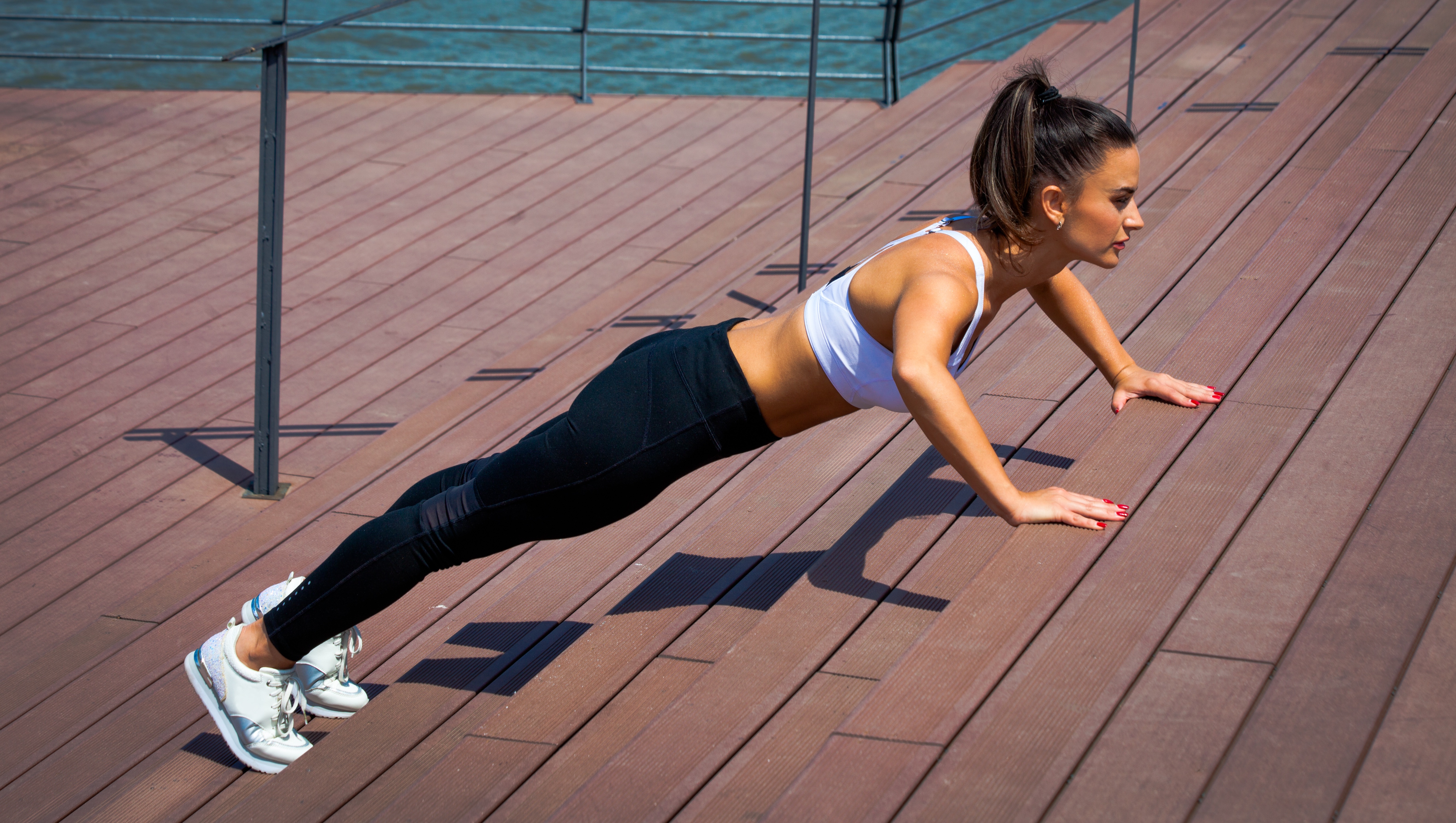
Forget the stairclimber in your local gym. How about taking your next full-body strength program to your staircase at home? Using one set of stairs anywhere, you could sculpt stronger muscles, strengthen your core and activate muscle groups from head to toe.
In five bodyweight exercises, these full-body moves target the chest, shoulders, triceps, core, hip flexors, glutes and legs. You don’t need a yoga mat, dumbbells, or even the best kettlebells to get it done, and you can leave the stairclimbers to those in the gym.
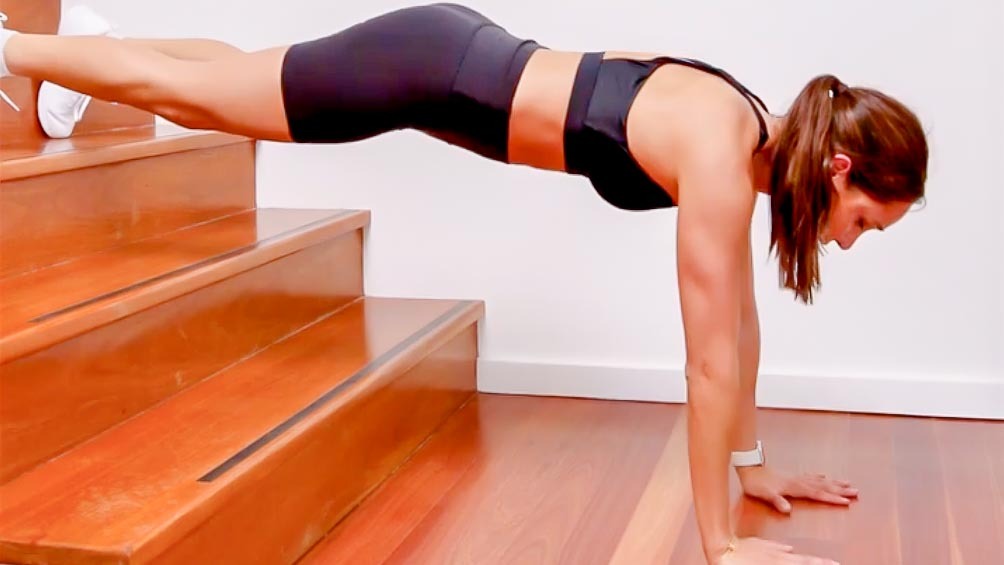
If you have an injury (new or old), are pregnant, or returning from pregnancy, always consult a qualified medical professional before starting a new exercise program. If you experience prolonged pain or discomfort, stop immediately and seek the advice of a personal trainer or physician.
Below, we cover 5 full-body strength exercises you can do using a staircase, how to do them and reasons you should.
5 full-body strength exercises you can do on a staircase
Like step-ups, stair climbing hits the posterior chain muscles, including your back, glute, hamstrings and calves. Your core muscles must stabilize your torso and drive movement, and your quads and hip flexor muscles work hard, too. According to Duke University, stair climbing requires roughly 8-11kcal of energy per minute, and active stair climbers ‘have a higher aerobic capacity,’ increase leg power and ‘maintain healthy bones, muscles and joints.’
A study re-reported by Medical News Today even found that people who climbed 50 stairs throughout the day ‘reduced their risk of cardiovascular disease by 20%’ compared to those who didn’t. Bonus! Looking at your stairs with a newfound respect? Try these five full-body strength exercises.
1. Stair sprinting

Stair sprinting increases your heart rate and taps into anaerobic exercise, which means exercising using glucose and without oxygen; this targets muscular power and requires your fast-twitch muscle fibers to take on the workload. Ideally, work at your fastest pace over a short distance.
How:
To do a stair sprint, start at the bottom of your stairs and run as fast as possible to the top. The steeper or longer the set of stairs, the better, but you can use any type of staircase available. Walk or gently jog to the bottom to recover, then repeat for as many rounds as you’d like.
We recommend sets of 10 sprints with 60 seconds rest between sets. You could also add bodyweight exercises such as squats and push-ups between rounds.
2. Walking lunges
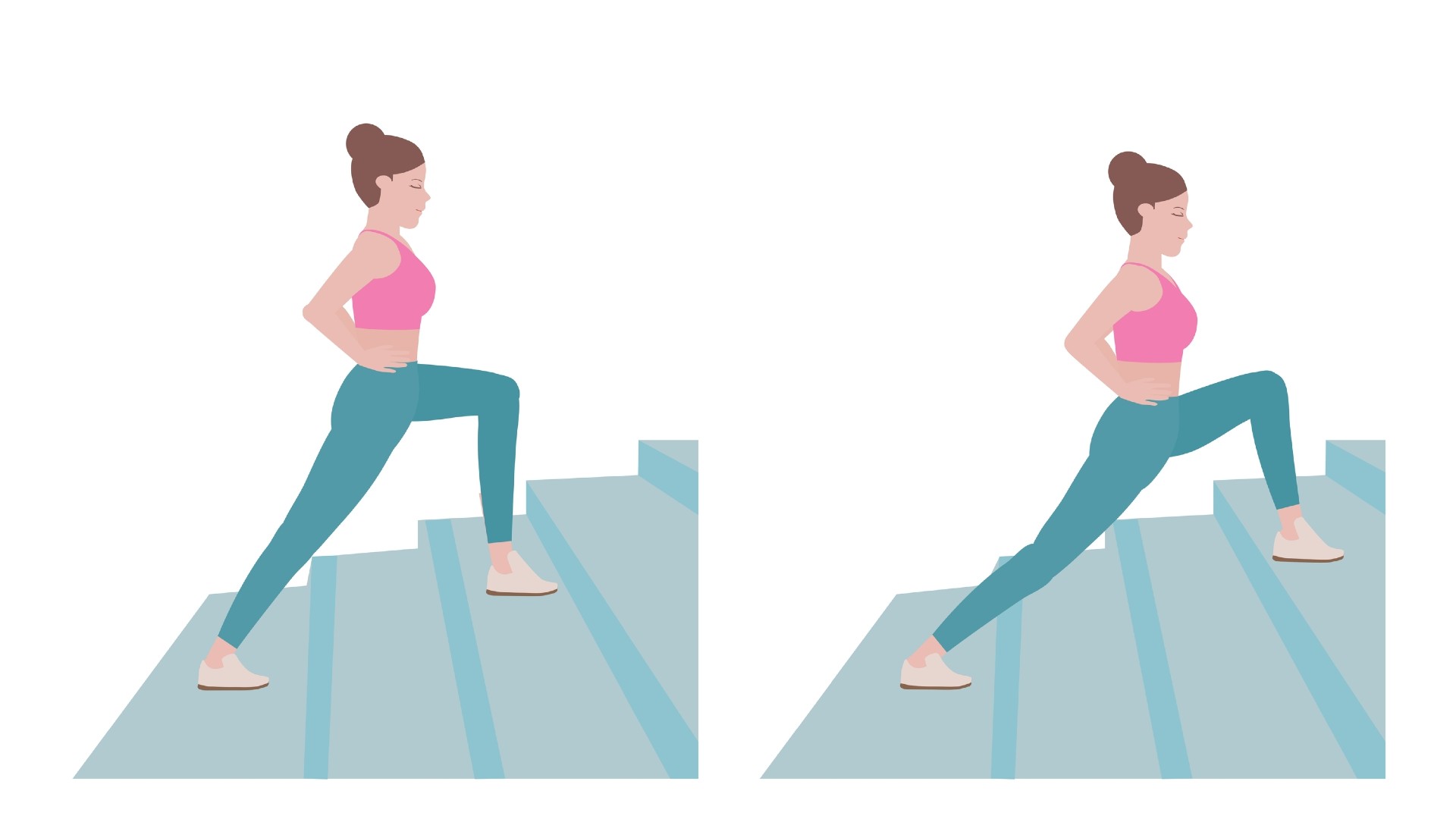
Lunging on an incline blasts your leg muscles, so be prepared to feel the burn. We recommend sticking to a staircase that doesn’t have gaps between the stairs, and if you choose to use stairs with gaps, wear grippy running shoes or cross training shoes that keep your feet grounded without slipping. If you feel uncomfortable, skip the exercise completely.
How:
Start at the bottom of your stairs and take a big step with your right foot, landing with the whole foot flat on the stairs with enough space to perform a lunge. Bend your left knee toward the staircase into a lunge position, then take a big step forward with your left foot and drive through your right leg as you repeat on your left side. Continue up the stairs to the top, then jog down and start again. Add a set of kettlebells or the best adjustable dumbbells as a progression.
3. Jump squats
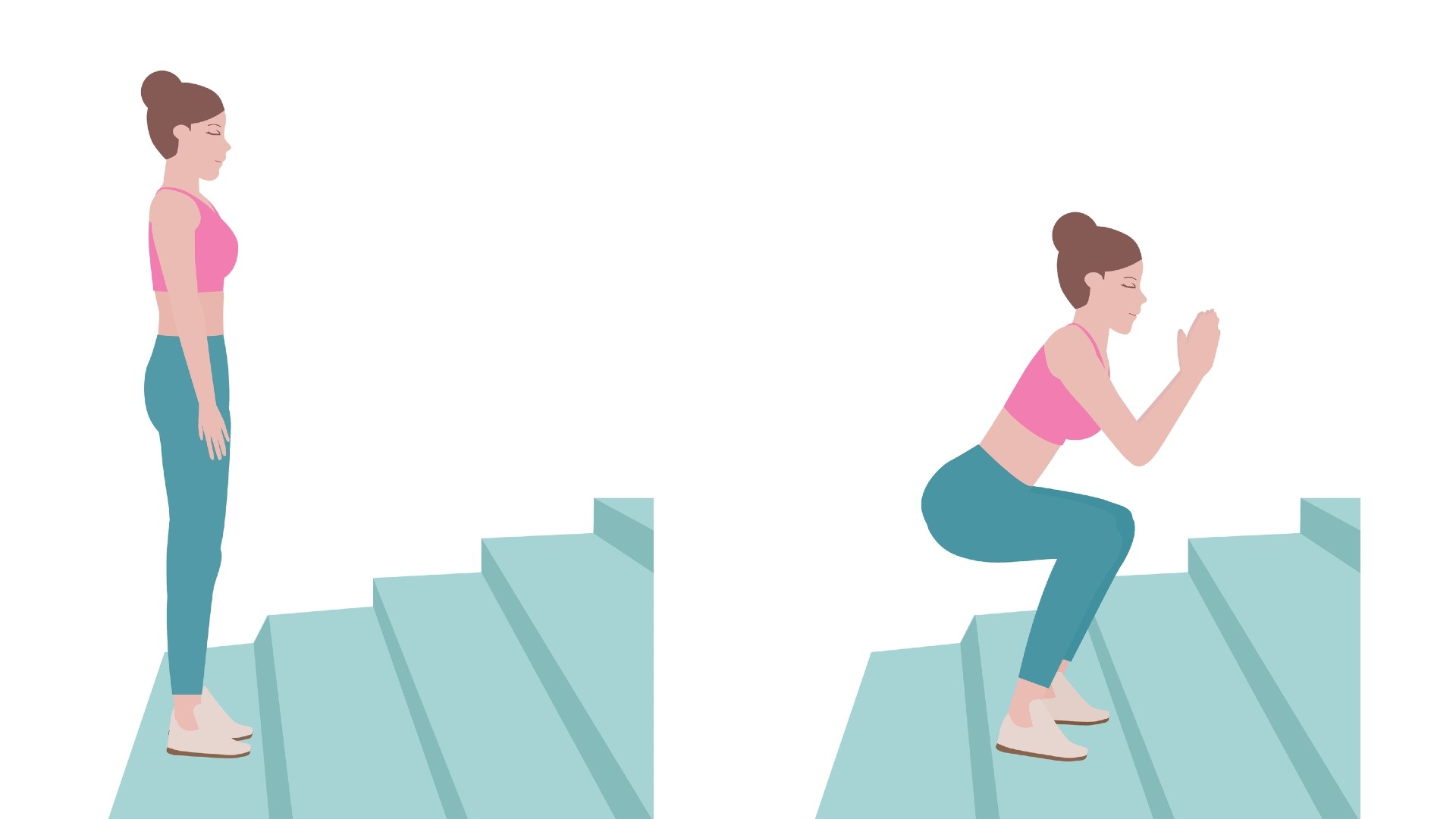
Jump squats develop leg power and explosive motion, helping you to run faster and with more stamina. Keep your stomach engaged and land with bent knees, sinking your butt as far as possible while keeping your chest proud and spine neutral.
How:
Start at the bottom of your staircase with feet hip-width apart. Jump onto the first step, landing with your feet planted and knees bent, lowering fully into a squat position. Keep your chest up. As you drive upward, jump onto the second step and repeat. For an extra challenge, try to jump the distance of two steps, then hop down a step and continue to make your way up.
4. Cossack squat
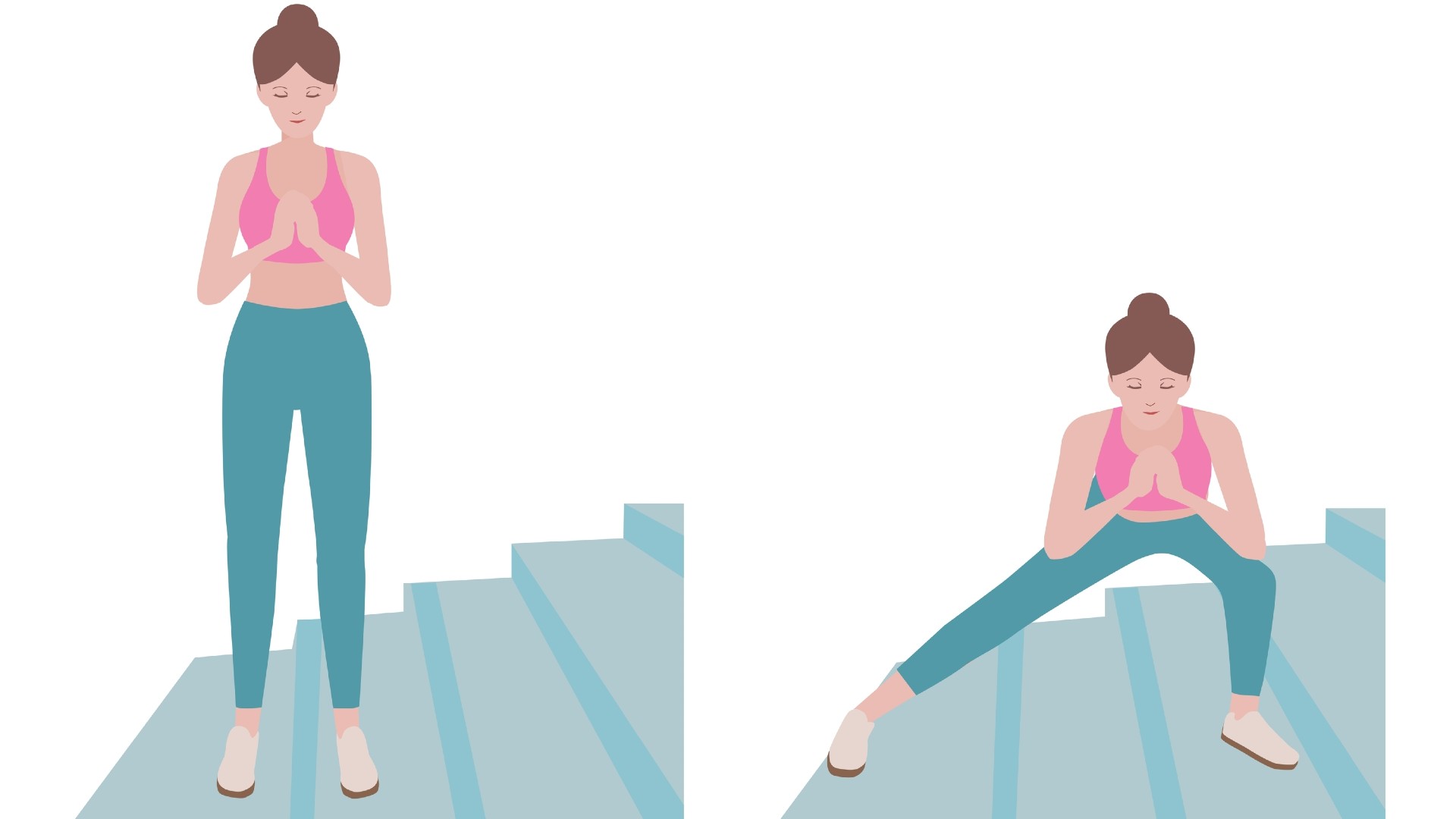
The Cossack squat develops lower body strength and range of motion, increasing mobility in the hips, knees and ankles and torching the lower body muscles.
How:
Start at the bottom of the staircase-facing side onto the stairs and with your right foot closest to the first stair. Take a big step to the side and place your right foot onto the stairs with your toes pointed in the same direction as your torso. Bend into your right leg, performing a side lunge. Sit as far down as possible, then drive through your right leg and step your left foot to meet your right. Continue climbing the staircase leading with the right side, jog to the bottom and change to your left.
Aim for 3-5 sets of the staircase per leg.
5. Traveling push-ups
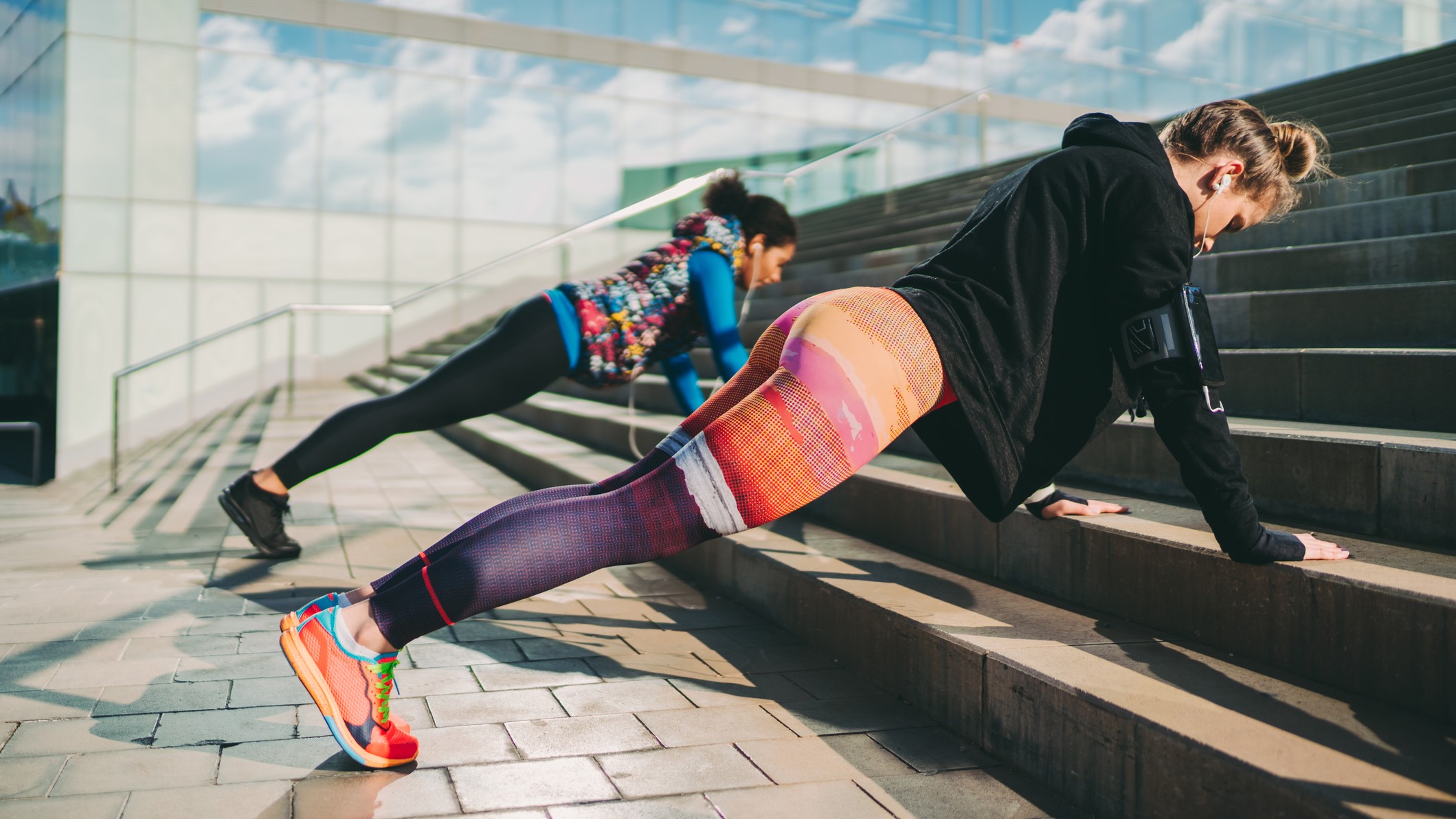
Push-ups target the pectorals, anterior deltoids (fronts of the shoulders), triceps and core muscles. Lower your chest fully to the staircase each rep. If you struggle to climb, focus on performing 10 reps of push-ups on the incline without climbing. You could also modify this exercise to elevate both feet onto the stairs and position your hands on the floor at the bottom of the staircase — known as a decline push-up.
How:
Start in a push-up position with your feet on the first step. Engage your core and ensure your hips align with your shoulders. Perform a push-up, then walk your right hand and left foot up a step, followed by your left hand and right foot. Perform a push-up, then continue traveling up the stairs. Jog back down, rest and start your next set.
This 5-move staircase workout takes 18 minutes to sculpt and strengthen full-body muscle
Here’s a five-move staircase workout to try anywhere and everywhere. You can add your home gym equipment or use your body weight to keep the full-body workout accessible and travel-friendly. Why not challenge a friend to a paired session and try a you-go-I-go format?
EMOM x 3 rounds
Minute 1: Staircase sprints
Minute 2: Staircase walking lunges
Minute 3: Staircase jump squats
Minute 4: Staircase Cossack squats
Minute 5: Staircase traveling push-ups
Minute 6: Rest
Every minute on the minute.
During minute one, perform staircase sprints, jogging back down to the bottom after each run. On the second minute, move straight into walking lunges and so on. Minute six should be for rest, then start from the top. Perform three rounds for 18 minutes and add rounds for a longer workout.







